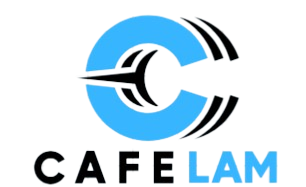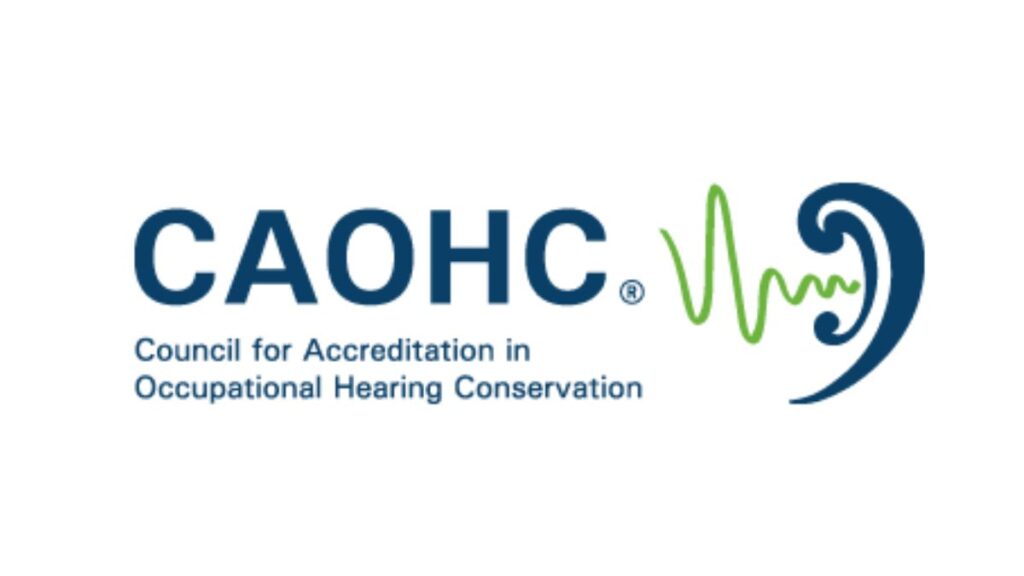In workplaces where employees are regularly exposed to high levels of noise—such as manufacturing plants, construction sites, airports, and military installations—hearing loss is a serious and preventable occupational hazard. To combat this risk, employers are required by law to implement Hearing Conservation Programs (HCPs). Central to the success of these programs is the role of trained professionals who can administer audiometric testing, fit hearing protection devices, and educate workers on hearing health. One of the most recognized credentials for these professionals is CAOHC certification.
The Council for Accreditation in Occupational Hearing Conservation (CAOHC) is a nonprofit organization that sets national standards for training and certifying individuals involved in occupational hearing conservation. Earning a CAOHC certification demonstrates that a professional has met rigorous standards of knowledge and competence in this specialized field. This article provides a comprehensive overview of what CAOHC certification is, why it matters, how to obtain it, and how it benefits both professionals and the workers they serve.
Understanding the Council for Accreditation in Occupational Hearing Conservation (CAOHC)
Before diving into the specifics of CAOHC certification, it’s important to understand the organization behind it. Founded in 1981, CAOHC is a collaborative body composed of representatives from government agencies, professional organizations, industry groups, and academic institutions. Its mission is to promote excellence in occupational hearing conservation through education, standardization, and certification.
CAOHC does not directly provide training or issue certifications itself. Instead, it accredits training courses and certifies individuals who successfully complete those courses. This ensures consistency and quality across the nation, regardless of where a professional receives their training.
CAOHC’s work is grounded in the Occupational Safety and Health Administration (OSHA) regulations, particularly 29 CFR 1910.95, which outlines requirements for occupational noise exposure and hearing conservation programs. While OSHA mandates that employers implement HCPs when noise levels exceed 85 decibels averaged over 8 hours (the “action level”), it does not specify who can perform key tasks like audiometric testing. That’s where CAOHC steps in—by defining best practices and certifying qualified personnel.
What Is CAOHC Certification?
CAOHC certification is a professional credential awarded to individuals who have successfully completed a CAOHC-approved training course and passed a standardized examination. The most common type of certification offered by CAOHC is the Certified Occupational Hearing Conservationist (COHC) credential.
A COHC is trained to:
- Conduct basic audiometric (hearing) tests
- Properly fit and instruct workers on the use of hearing protection devices (HPDs)
- Maintain and calibrate audiometric equipment
- Educate employees about noise hazards and hearing protection
- Maintain accurate records as part of an employer’s Hearing Conservation Program
It’s important to note that a COHC is not a licensed audiologist or physician. Their role is supportive and operational within an HCP, working under the supervision of a qualified professional such as an audiologist, otolaryngologist (ENT), or physician, as required by OSHA.
The CAOHC certification process ensures that individuals possess the foundational knowledge and practical skills needed to contribute effectively to workplace hearing health. It also signals to employers, regulators, and coworkers that the certified individual adheres to nationally recognized standards.
Who Should Pursue CAOHC Certification?
CAOHC certification is ideal for a wide range of professionals who are involved—or wish to become involved—in occupational health and safety. Common candidates include:
- Occupational health nurses
- Safety managers and coordinators
- Industrial hygienists
- Human resources personnel
- EHS (Environmental, Health, and Safety) specialists
- Medical assistants or technicians
- Military health personnel
- Third-party hearing testing providers
Many employers in high-noise industries actively seek or even require CAOHC certification for staff responsible for managing their Hearing Conservation Programs. In some cases, state regulations or company policies mandate that only CAOHC-certified individuals may perform certain tasks, such as conducting baseline or annual audiograms.
Even for those not currently in a hearing conservation role, earning this credential can open doors to new career opportunities. As workplace safety standards continue to evolve and regulatory scrutiny increases, the demand for qualified hearing conservationists is growing.
The CAOHC Certification Process: Step by Step
Obtaining CAOHC certification involves several clear and manageable steps. Here’s a detailed breakdown of the process:
Step 1: Meet Basic Eligibility Requirements
There are no formal educational prerequisites to enroll in a CAOHC-approved course. However, candidates should have:
- Strong communication skills
- Basic computer literacy
- The ability to follow standardized procedures
- An interest in occupational health and safety
Some employers may require candidates to be employed in a role that involves hearing conservation duties, but CAOHC itself does not impose employment conditions for certification.
Step 2: Enroll in a CAOHC-Approved Training Course
CAOHC accredits over 100 training providers across the United States and internationally. These courses are typically offered in-person, online (with live instruction), or in hybrid formats. The course must be at least 20 hours long and include both didactic (lecture-based) and hands-on components.
Key topics covered in the training include:
- Anatomy and physiology of the ear
- Physics of sound and noise measurement
- OSHA and other regulatory requirements
- Audiometric testing procedures
- Types and selection of hearing protection devices
- Recordkeeping and data management
- Motivational strategies for worker engagement
A critical part of the course is the hands-on practicum, where students practice administering hearing tests using audiometers and fitting various types of earplugs and earmuffs.
Step 3: Pass the CAOHC Standardized Examination
At the end of the course, candidates must pass a proctored, multiple-choice exam developed by CAOHC. The exam consists of 100 questions and covers all major topics from the training curriculum. A passing score is typically 75% or higher, though exact requirements may vary slightly by course provider.
The exam is designed to assess not just memorization, but practical understanding of hearing conservation principles.
Step 4: Receive Your COHC Credential
Once you pass the exam, your course instructor submits your information to CAOHC. After verification, CAOHC issues your official certification and assigns you a unique certification number. You’ll receive a certificate and may use the title “Certified Occupational Hearing Conservationist (COHC)” professionally.
Your CAOHC certification is valid for five years.
Step 5: Maintain Certification Through Recertification
To keep your certification active, you must recertify every five years. CAOHC offers two pathways:
- Retake the full 20-hour course and exam
- Complete a 6-hour recertification course and pass a shorter exam
The recertification option is popular among experienced COHCs who want to refresh their knowledge without repeating the entire program. Both options ensure that certified professionals stay current with evolving standards, technologies, and best practices.
Benefits of CAOHC Certification
Earning a CAOHC certification offers significant advantages for both individuals and organizations.
For Professionals:
- Career Advancement: Certification can lead to promotions, specialized roles, or higher pay in EHS and occupational health fields.
- Credibility: The COHC credential is nationally recognized and respected by employers, regulators, and peers.
- Skill Development: The training provides practical, hands-on experience that enhances job performance.
- Networking Opportunities: CAOHC-certified professionals gain access to a community of experts and resources.
For Employers:
- Regulatory Compliance: Using CAOHC-certified staff helps ensure that HCPs meet or exceed OSHA expectations.
- Program Effectiveness: Trained professionals are more likely to detect early signs of hearing loss and engage workers in protective behaviors.
- Reduced Liability: Properly administered HCPs lower the risk of workers’ compensation claims related to occupational hearing loss.
- Consistency and Quality: CAOHC standards promote uniformity in testing procedures and recordkeeping across sites and shifts.
Moreover, studies have shown that workplaces with robust, well-managed hearing conservation programs—often led by CAOHC-certified personnel—experience lower rates of noise-induced hearing loss over time.
CAOHC vs. Other Certifications: What’s the Difference?
While CAOHC certification is the gold standard for occupational hearing conservationists, it’s sometimes confused with other credentials in audiology or industrial hygiene.
For example:
- Board Certification in Audiology (e.g., from AAA or ASHA): These are advanced clinical credentials for licensed audiologists who diagnose and treat hearing disorders. COHCs do not perform clinical diagnoses.
- CIH (Certified Industrial Hygienist): This certification covers a broad range of workplace hazards (chemical, physical, biological), including noise—but not with the same depth in hearing conservation as CAOHC.
- OSHA 30-Hour Training: This general safety course includes a module on noise but does not qualify someone to run an HCP.
CAOHC certification is unique in its focused, practical approach to the day-to-day operations of hearing conservation. It fills a critical niche between general safety training and advanced clinical practice.
Common Misconceptions About CAOHC Certification
Despite its widespread recognition, several myths persist about CAOHC certification:
Myth 1: “CAOHC certification allows you to work as an audiologist.”
False. COHCs are not licensed to diagnose hearing conditions or provide medical advice. Their role is strictly within the scope of occupational hearing conservation under professional supervision.
Myth 2: “Once certified, you never need to retrain.”
Incorrect. Certification expires after five years and must be renewed through recertification to ensure ongoing competence.
Myth 3: “Only healthcare professionals can get certified.”
Not true. While many COHCs come from medical or safety backgrounds, the program is open to anyone who meets the course requirements and demonstrates proficiency.
Myth 4: “CAOHC certification is required by OSHA.”
OSHA does not mandate CAOHC certification specifically. However, OSHA does require that audiometric testing be performed by a “qualified professional,” and many employers interpret this to mean CAOHC-certified personnel due to the program’s rigor and national acceptance.
Clarifying these misconceptions helps professionals make informed decisions about pursuing certification.
How CAOHC Certification Supports Public Health
Beyond individual workplaces, CAOHC certification contributes to broader public health goals. Noise-induced hearing loss is the second most common occupational illness in the U.S., affecting millions of workers. It is permanent, irreversible, and entirely preventable with proper intervention.
By standardizing training and promoting best practices, CAOHC helps reduce the national burden of occupational hearing loss. Certified professionals play a key role in:
- Identifying at-risk workers early
- Ensuring accurate and reliable hearing test results
- Promoting consistent use of effective hearing protection
- Educating workers on lifelong hearing health
In this way, CAOHC-certified individuals serve as frontline defenders of worker well-being, helping preserve one of our most vital senses: hearing.
Finding a CAOHC-Approved Course
If you’re ready to pursue CAOHC certification, the first step is to locate an approved course provider. CAOHC maintains an up-to-date directory of accredited trainers on its official website (caohc.org). You can search by state, zip code, or course format (in-person, virtual, etc.).
When selecting a course, consider:
- Instructor experience and reputation
- Class size (smaller groups often allow more hands-on practice)
- Availability of equipment for practicum sessions
- Post-course support (e.g., exam preparation, recertification reminders)
Many employers sponsor their employees’ training, recognizing the long-term value of having certified staff on-site.
The Future of Hearing Conservation and CAOHC’s Role
As technology advances and workplace environments evolve, so too does the field of hearing conservation. Emerging trends include:
- Tele-audiometry and remote hearing testing
- Smart hearing protection that monitors noise exposure in real time
- Integration of HCP data with broader occupational health platforms
CAOHC continues to adapt its standards and training materials to reflect these innovations. The organization regularly updates its certification exam and curriculum to ensure relevance and effectiveness.
Furthermore, with increasing awareness of mental health and quality-of-life impacts of hearing loss, the importance of prevention is gaining traction beyond regulatory compliance. In this context, CAOHC certification will remain a cornerstone of professional competence in occupational hearing health.
Conclusion
CAOHC certification is more than just a credential—it’s a commitment to protecting workers’ hearing and promoting safer, healthier workplaces. By establishing national standards for training and performance, the Council for Accreditation in Occupational Hearing Conservation has created a trusted pathway for professionals to gain the skills and recognition they need to make a real difference.
Whether you’re an EHS specialist looking to expand your expertise, a nurse seeking a new specialty, or an employer aiming to strengthen your Hearing Conservation Program, CAOHC certification offers clear benefits. It enhances professional credibility, ensures regulatory alignment, and—most importantly—helps prevent one of the most common yet overlooked occupational injuries: noise-induced hearing loss.
With a straightforward certification process, strong industry support, and a focus on practical, real-world application, CAOHC certification stands out as an essential qualification for anyone serious about occupational hearing conservation. As long as workplaces involve noise, the need for skilled, certified hearing conservationists will remain—and CAOHC will continue to lead the way in setting the standard for excellence.







